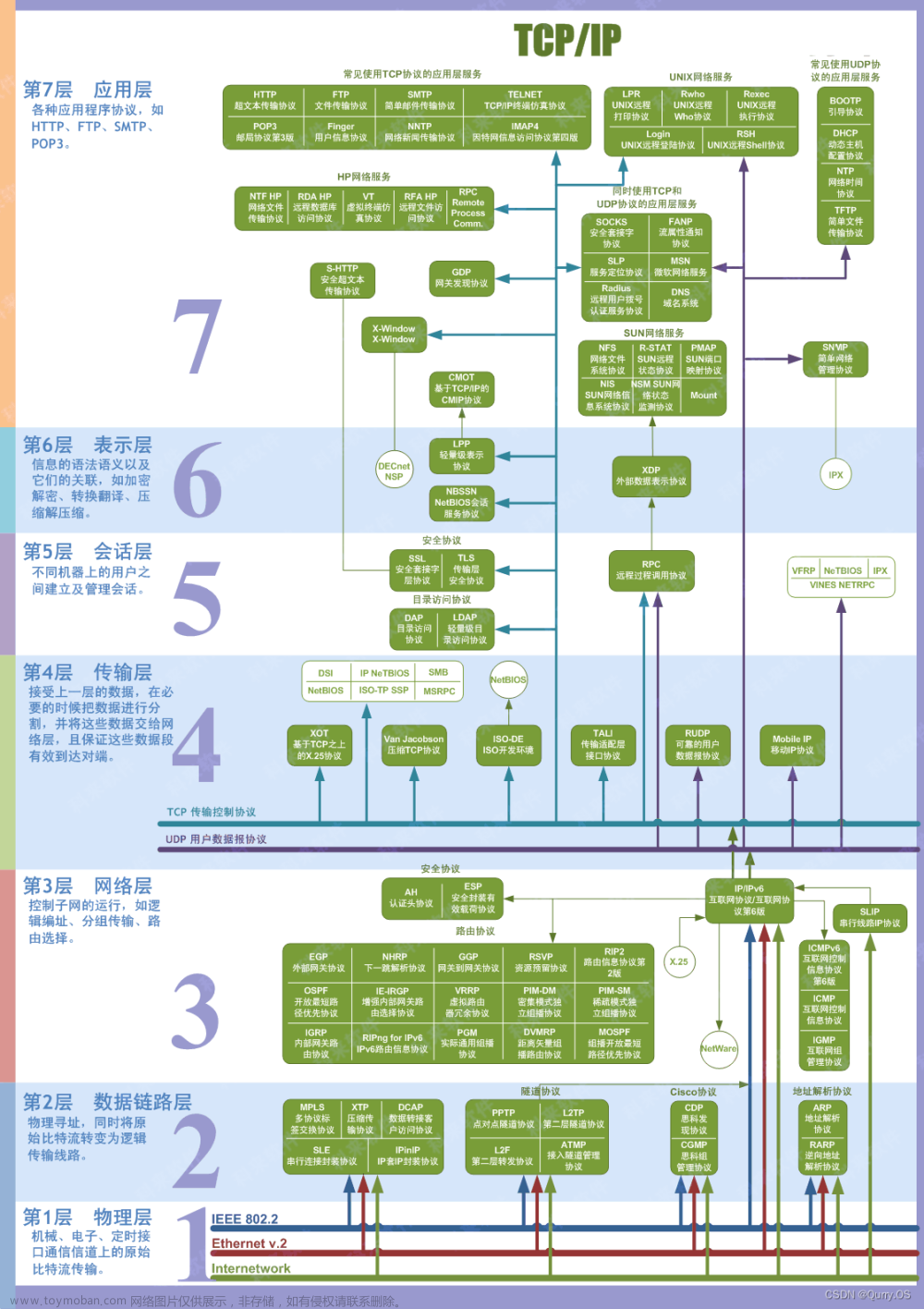1.问题背景
在制作RPG游戏角色和NPC移动时,需要角色自动避开障碍物,到达终点
怎么快速找到一条到达终点的路径?
使用a星寻路算法
2.A星算法的思路
绿色:起点;红色:终点 ;黑色:障碍物
新增的浅绿方块为当前评估节点
对角线的代价为14.14
直线代价为10


基本概念:
f = g + h
f: 总评估代价
g:起点到当前点的代价
h:当前点到终点的预期(或理想)代价(如果当前评估点到终点的直线上没有障碍物,则当前的总代价f不会改变)
将总代价f作为权重,每次优先遍历最小的f节点
a星算法,会在开表中寻找总花费最小的节点为评估点,遍历当前评估点附近点,在附近点,选择总代价最小的点作为评估点的下一节点
1.初始化起点,终点;将起点放入开表,作为评估点,在开表中选择总代价最小的作为评估节点,如果评估节点为终点,则结束
2.将当前的节点移除开表,放入闭表中(将当前的节点标记为已评估节点)
3.先遍历评估节点周围8个点(上下左右,左上角,右上角,左下角,右下角),将它们放入一个临近点集合中
4.遍历临近点集合,如果闭表已经有该点(该点已经被评估过)或者该点是障碍物,跳过该点
5. 计算 邻近点到起点总花费newcost=当前到邻近点的距离+当前点到起点的花费
6. 1)newGCost 小于之前计算的Gost,说明该点已经被遍历过,在开表中,
说明之前的路径存在绕远路,将邻近点的上一节点改为当前点,计算邻近点的f,g,h花费
2)开表中不包含该邻近点,该节点没有被遍历,不在开表,将邻近点的上一节点改为当前点,
加入开表,计算邻近点的f,g,h花费
7.重复1
上面的过程,如果看不太懂,后面核心代码实现,有代码和注释
距离的计算
给定两个坐标,计算两个坐标的路径距离
代码 创建APathNode类
3.代码实现
public class APathNode : IComparable<APathNode>
{
public int X;
public int Z;
public bool available;//如果是障碍物为false
public float GCost = 0;//起点到当前点的花费
public float HCost = 0;//当前点到终点的预期花费
public float TotalCost = 0;//总花费
public APathNode LastNode;//上一个节点
public int CompareTo(APathNode other)//使用最小堆排序,要实现IComparable<APathNode>接口
{
if (this.TotalCost>other.TotalCost)
{
return 1;
}
else if (other.TotalCost == this.TotalCost)
{
return 0;
}
else
{
return -1;
}
}
}

代码,创建AStarSearchPath类,下面代码均属于该类
计算两点的距离
public float GetCostByDistance(APathNode currentNode,APathNode neighborNode)
{
float cost = 0;
int Horizontal = Math.Abs(currentNode.X - neighborNode.X);
int Vertical = Math.Abs(currentNode.Z - neighborNode.Z);
int line = Math.Min(Horizontal, Vertical);//对应上图一个橙色箭头
int brokenline = Horizontal + Vertical;//折线
//CurveCostWeigh=14.14f,LineCostWeight=10f
//cost= 曲线价值 + 直线价值
//cost= 曲线价值 + brokenline(1黄+2橙)-2*line(橙)
cost = line * CurveCostWeigh+(brokenline-2*line)*LineCostWeight;
return cost;
}
寻找附近的邻近点
private List<APathNode> GainNeighborNode(APathNode currentNode)
{
List<APathNode> neighborNodes = new List<APathNode>();
for (int i = -1; i <2 ; i++)
{
for (int j = -1; j < 2; j++)
{
if(i==0&&j==0) continue;//排除当前节点
int x = currentNode.X + i;
int z = currentNode.Z + j;
if (x >= 0 && x < width && z >= 0 && z < height)
{
neighborNodes.Add(Map[z, x]);//在范围的邻近点加入集合
}
}
}
return neighborNodes;
}
得到最后的寻路节点集合
private void RetracePath()
{
FinalPaths = new List<APathNode>();
APathNode point = EndPathNode;
while (point!=null)
{
FinalPaths.Add(point);
point = point.LastNode;
}
}
寻路方法核心代码
public void SearchPath()
{
//将起点加入开表
OpenList.Add(StartPathNode);//APathNode
while(OpenList.Count>0)
{
//currentNode = FindMinExpectCost();//寻找总花费最小节点
currentNode = OpenList.Dequeue();//取出第一元素,在开表中删除
//将当前的节点移除开表,放入闭表中(将当前的节点标记为已评估节点)
//OpenList.Remove(currentNode);删除
CloseList.Add(currentNode);
//如果评估点等于终点,结束寻路
if (currentNode == EndPathNode)
{
RetracePath();
//找到寻路路径
Debug.Log("---找到了");
return;
}
else
{
//遍历评估节点周围8个点(上下左右,左上角,右上角,左下角,右下角)
List<APathNode> neighborNodes = GainNeighborNode(currentNode);
for (int i = 0; i < neighborNodes.Count; i++)
{
//如果闭表已经有该点(该点已经被评估过)或者该点是障碍物
if (CloseList.Contains(neighborNodes[i]) || !neighborNodes[i].available)
{
continue;
}
//新的 起点->neighbor =当前点->邻近点 +当前点->起点
//计算 该邻近点到起点总花费=当前到邻近点的距离+当前点到起点的花费
float newGCost = GetCostByDistance(currentNode, neighborNodes[i]) + currentNode.GCost;
//1.如果邻近点到起点总花费<之前已计算的花费,说明之前的路径存在绕远路,将邻近点的上一节点改为当前点
//因为计算过邻近点Gcost,所有一定存在开表中,后面值为false
//2》.开表中不包含邻近点,该节点没有被遍历
if (newGCost < neighborNodes[i].GCost || !OpenList.Contains(neighborNodes[i]))
{
//更新邻近点的三大代价,将邻近点的上一节点设置为当前节点
neighborNodes[i].GCost = newGCost;
neighborNodes[i].HCost = GetCostByDistance(neighborNodes[i], EndPathNode);
neighborNodes[i].TotalCost = neighborNodes[i].GCost + neighborNodes[i].HCost;
neighborNodes[i].LastNode = currentNode;
if (!OpenList.Contains(neighborNodes[i]))
{
OpenList.Add(neighborNodes[i]);//2》.如果开表中不包含邻近点,该节点没有被遍历
}
}
}
}
}
}
代码初始化地图大小,障碍物坐标,起点终点坐标
public void initMapData2(Vector2 startPoint,Vector2 endPoint,Vector2 rect, GameObject root=null)
{
this.startPoint = startPoint;
this.endPoint = endPoint;
//初始化地图高度,宽度
this.width = (int)rect.x;
this.height = (int)rect.y;
if (startPoint.x <= 0 || startPoint.x > width||startPoint.y <= 0 || startPoint.y > height)
{
throw new Exception("输入的startPoint超出范围");
}
if (endPoint.x <= 0 || endPoint.x > width||endPoint.y <= 0 || endPoint.y > height)
{
throw new Exception("输入的endPoint超出范围");
}
Map = new APathNode[height, width];
for (int i = 0; i <height; i++)
{
for (int j = 0; j < width; j++)
{
#region 基于自己的规则设置障碍物
GameObject c=root.transform.GetChild((i*width)+j).gameObject;
Map[i, j] = new APathNode();
Map[i, j].X = j;
Map[i, j].Z = i;
Color color = c.GetComponent<MPImage>().color;
if (color.r<=0&&color.g<=0&&color.b<=0)
#endregion 基于自己的规则设置障碍物
{
Debug.Log("false");
Map[i, j].available = false;
}
else
{
Debug.Log("true");
Map[i, j].available = true;
}
}
}
StartPathNode = new APathNode();
EndPathNode = new APathNode();
StartPathNode = Map[(int)startPoint.y, (int)startPoint.x];
EndPathNode = Map[(int)endPoint.y, (int)endPoint.x];
}
AStarSearchPath类的属性
public float LineCostWeight = 10f;
public float CurveCostWeigh = 14.14f;
//public List<APathNode> OpenList=new List<APathNode>();
public PriorityQueue<APathNode> OpenList=new PriorityQueue<APathNode>();//使用最小堆排序,要实现IComparable<APathNode>接口
public List<APathNode> CloseList=new List<APathNode>();
public APathNode currentNode;
public APathNode[,] Map;
public APathNode StartPathNode;
public APathNode EndPathNode;
public int width;
public int height;
public List<APathNode> FinalPaths=new List<APathNode>();
4.结束语
希望上面的代码对大家有所帮助,有疑问的地方可以在评论区留言
优化和扩展
平滑路径,生成路径不平滑,删除无用的节点
A星寻路尽管相对于其他算法,效率比较高,但是当地图节点,比较多时,花费时间还是比较多
最小堆,可以优化在openlist开表中取最小花费的时间
拐点算法,只寻找关键的拐点
权重引导寻路,f=g+h+w,权重存储在AStarSearchPath的Map中,提前设置权重小的节点,寻路时,会沿着提前设置的节点寻路
编写地图编辑器,基于游戏引擎,在场景中设置障碍物,用图片保存
如果大家想学习更多的扩展,麻烦大家点赞评论收藏,支持一下,如果有很多人想学习,考虑出更多的关于A星的扩展文章来源:https://www.toymoban.com/news/detail-703654.html
补充
实现最小堆排序
增加了PriorityQueue类,修改了AStarSearchPath的OpenList,SearchPath方法currentNode = OpenList.Dequeue();替换了currentNode = FindMinExpectCost();OpenList.Remove(currentNode);文章来源地址https://www.toymoban.com/news/detail-703654.html
public class PriorityQueue<T> where T : IComparable<T>
{
private List<T> data;
public PriorityQueue()
{
this.data = new List<T>();
}
public void Clear()
{
data.Clear();
}
public bool Contains(T item)
{
return data.Contains(item);
}
/// <summary>
/// 增加数据到优先队列
/// </summary>
/// <param name="item"></param>
public void Add(T item)
{
data.Add(item);//加入到完全二叉树的末尾,新节点依次向上比较父节点
int childIndex = data.Count - 1;
while (childIndex > 0)
{
int parentIndex = (childIndex - 1) / 2;//根据规律,获取父节点
if (data[childIndex].CompareTo(data[parentIndex]) >= 0)//子节点大于父节点,满足最小堆定义,结束
break;
T temp = data[childIndex];//子节点小于父节点,交换父子节点
data[childIndex] = data[parentIndex];
data[parentIndex] = temp;
childIndex = parentIndex;//子节点等于父节点
}
}
/// <summary>
/// 取出并删除顶部数据
/// </summary>
/// <returns></returns>
public T Dequeue()
{
T item = data[0];//暂存第一个
int lastIndex = data.Count - 1;
data[0] = data[lastIndex];
data.RemoveAt(lastIndex);
--lastIndex;
int parentIndex = 0;
while (true)
{
int childIndex = parentIndex * 2 + 1;
if (childIndex > lastIndex)
{
break;//左子节点在范围内
}
int rightIndex = childIndex + 1;
if (rightIndex <= lastIndex && data[rightIndex].CompareTo(data[childIndex]) < 0)
{
childIndex = rightIndex;//选择左右最小的子节点,且右节点在范围内
}
if (data[parentIndex].CompareTo(data[childIndex]) <= 0)
{
break;//父节点比子节点小,满足最小堆,结束
}
T temp = data[parentIndex];
data[parentIndex] = data[childIndex];
data[childIndex] = temp;
parentIndex = childIndex;//父节点等于子节点索引
}
return item;
}
public T Peek()
{
return data[0];
}
public int Count
{
get
{
return data.Count;
}
}
}
到了这里,关于【A星算法】A星寻路算法详解(小白也可以看懂+C#代码+零基础学习A*)的文章就介绍完了。如果您还想了解更多内容,请在右上角搜索TOY模板网以前的文章或继续浏览下面的相关文章,希望大家以后多多支持TOY模板网!











